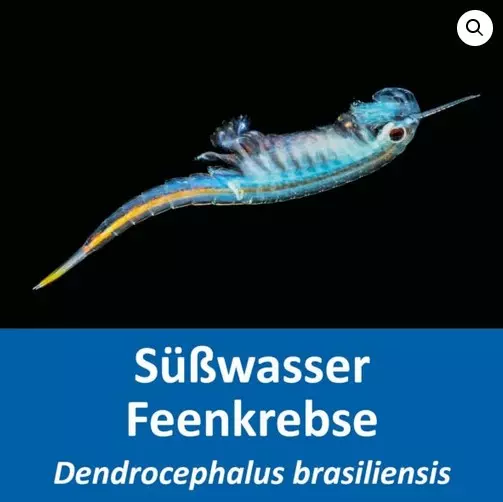
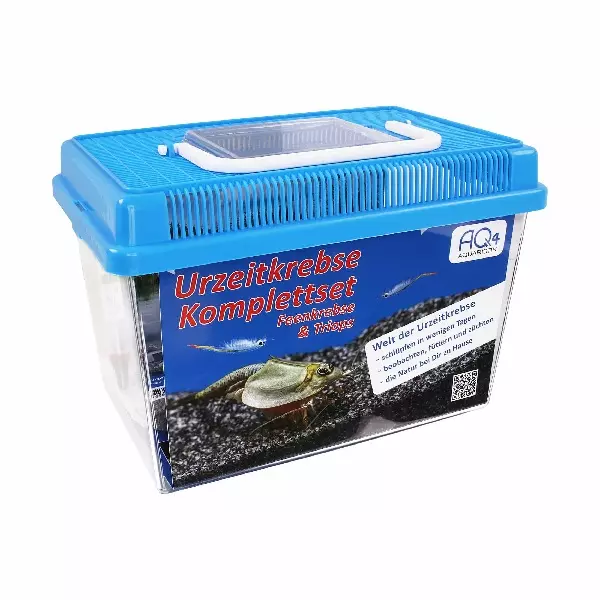
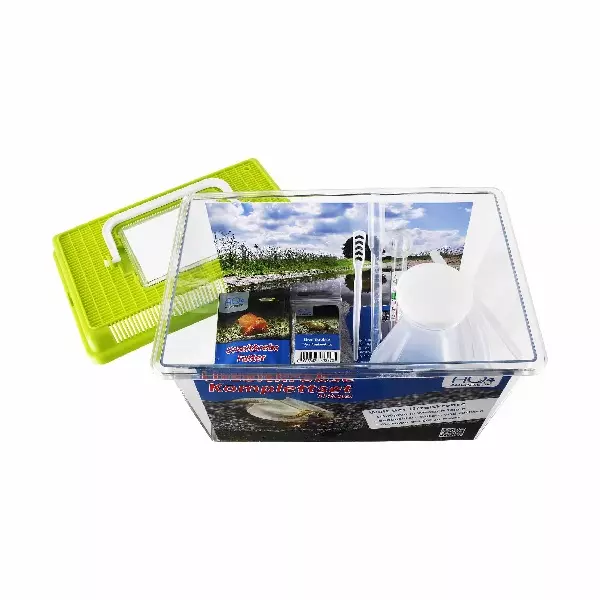


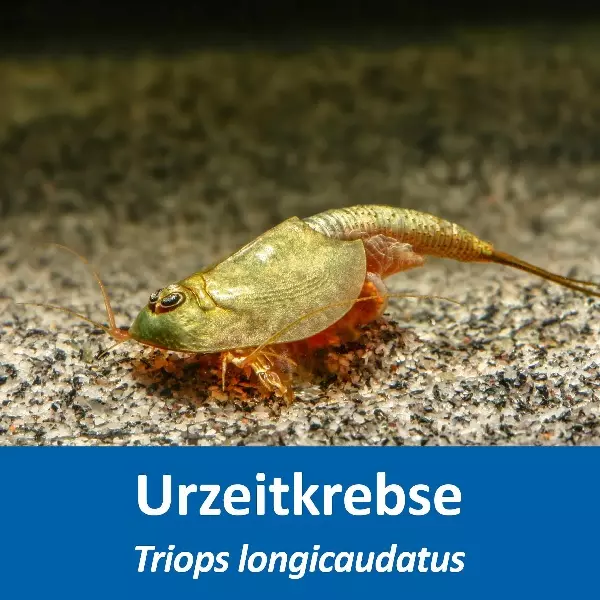
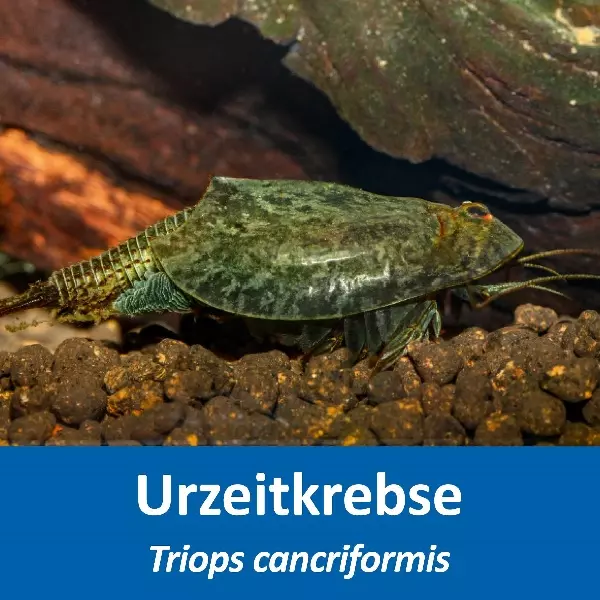
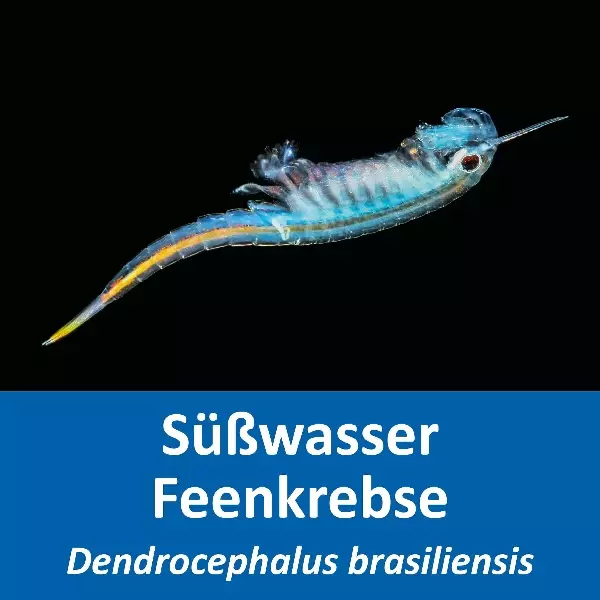
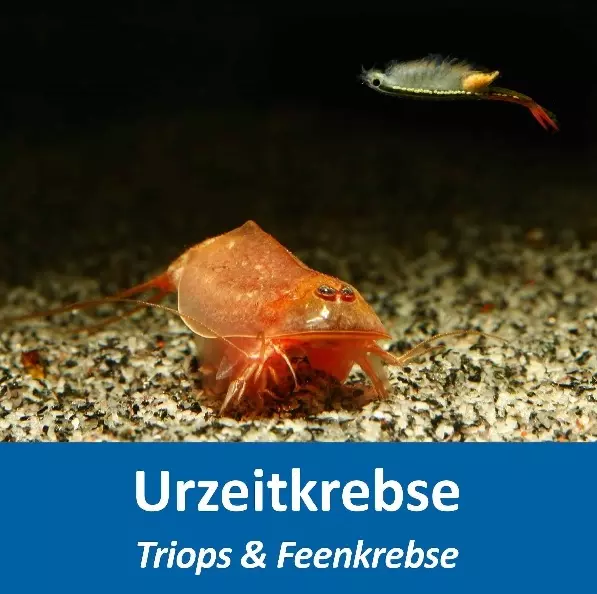
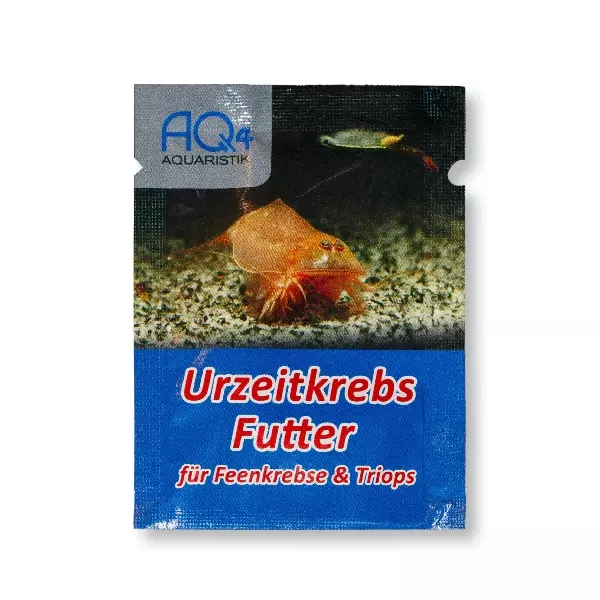






























CHF 39.90
Stock: 6
Available, delivery time: 1-3 days

Medium primeval crab complete set
- 2.5 litre rearing tank with coloured lid (depending on availability), dimensions incl. lid approx. 23 × 15 × 17 cm
- Triops eggs in sand
- Detailed instructions included, or read here
- Food for primeval crayfish
- Triops sand
- Thermometer
- Pipette and primeval crab shower
Tip: Stick the primeval crab eggs on an adhesive strip and let it float on the water with the eggs facing downwards. This way the eggs are constantly supplied with water and their hatching rate increases.
This large complete set is an extensive gift for birthdays, Christmas or in between! For children from kindergarten and adult explorers!
Note: Lid colour subject to availability. If you have a special request, please note it in the comments when ordering, we will do our best to meet your request.
- Mix (Triops & Fairy Crab) usually contains Triops longicaudatus and Brazilian Fairy Crab (Dendrocephalus brasiliensis), but other species may be included subject to availability.
- Brazilian Fairy Crab (Dendrocephalus brasiliensis) is most comfortable in warmer waters up to 28 °C.
- Triops cancriformis are dark brown-black in colour.
- Triops longicaudatus is an American crayfish, which initially has a light olive-green marbling. With age, the marbling disappears and the colours become more intense.
The colours, materials, types and manufacturers of the contents may differ from the photo.
1 of 1 reviews
5 out of 5 stars
Login
23 March 2025 09:27
👍
Top Service
Customers also bought
Similar products
Customers also viewed




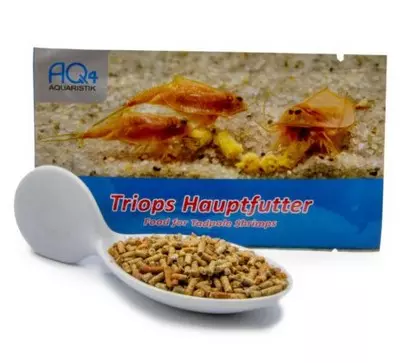

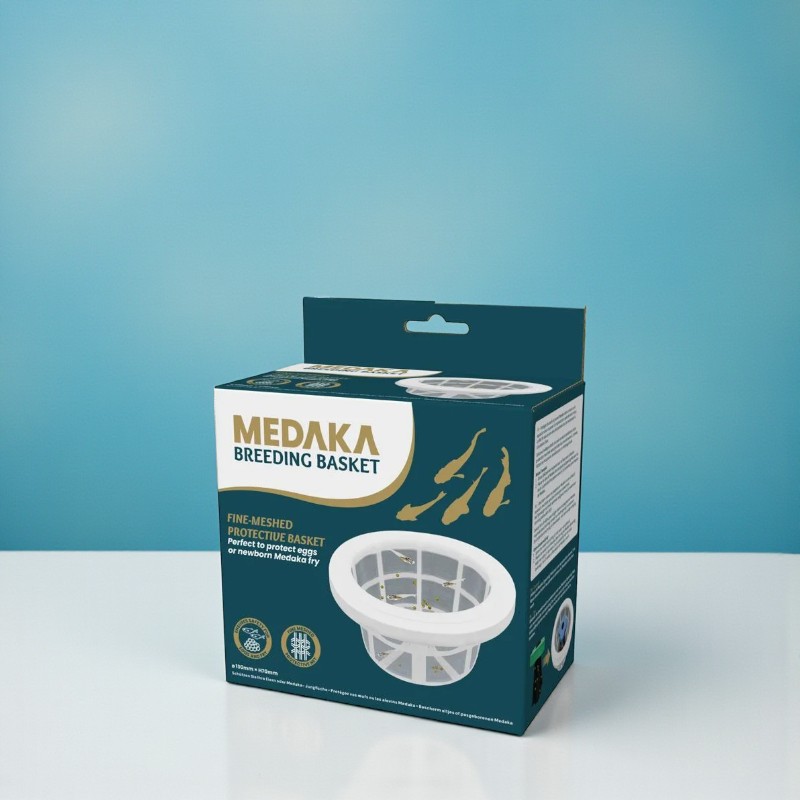
.jpg)
.jpg)


